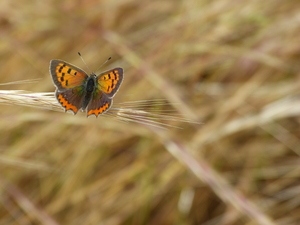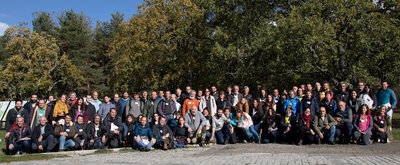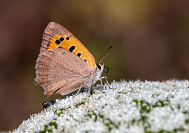The dataset of the long-term monitoring of diurnal butterflies in Doñana is already available in the institutional repository of Council for Scientific Research (Digital.CSIC), in the biodiversity data infrastructure (GBIF) and in the research and monitoring site registry of metadata of the European long-term monitoring network (DEIMS-SDR). Butterflies are one of the most popular groups of insects, due to the beauty of their individuals and the amazing transformation they experience during their life cycle. They appeared 100 million years ago in America, before the extinction of the dinosaurs. Its presence and abundance is linked to the presence of host plants, which in turn depend on the environmental conditions of humidity and temperature, and the physical-chemical conditions of the soil where they grow. Therefore, the analysis of these two parameters inform about the ecosystems state.
In Doñana, 46 species of butterflies (Rhopalocera) from 5 families have been recorded, such a small one, the lycaenid Plebejus argus, which has a mutualistic relationship with the ant Lasius niger and whose population is isolated from the rest of the populations on the Iberian Peninsula, and a larger oner, the nymphalid Charaxes jasius known as the Two-tailed Pasha. The method used for monitoring in Doñana is the "Butterfly Monitoring Scheme" (BMS) which establishes the transect as the sampling unit (see protocol). Sampling is carried out from March to October by technicians from the Natural Process Monitoring Team (ICTS-RBD) in habitats of Doñana such as Mediterranean scrub, humid grassland, pine forest and riverside forest. This monitoring will give us information on the state of their populations in a scenario of climate change and unprecedented use of the Doñana aquifer.
The ICTS-RBD aims to not only provide information on the trend of butterfly populations in Doñana, but also make possible the potential different uses that generate more knowledge in the scientific (climate change, natural history or biogeography), technical (management and conservation) or social field (scientific culture). To do this, the ICTS-RBD facilitates the access to the data to any user who needs this information following the FAIR principles for Open Science. The FAIR principles promote the maximum use of data which must be easy to find "Findable", accessible "Accessible", interoperable "Interoperable" and reusable "Reusable"). The information is structured in a standard DwC-A "Darwin Core Archive" file format, in interlinked text files using common terms (environmental events, records and measurements) together with their metadata. The data is also integrated with the databases of the Spanish Butterfly Monitoring Network (BMS-Spain) and the European Butterfly Monitoring Program (eBMS).
Reference:
Fernández-Zamudio, R.; Paz Sánchez, David Antonio; Laffite, Rafael; Román, Isidro; López Bañez, Diego; Pérez de Ayala, Ana; Hidalgo, Antonio; Andreu, Ana C.; Gallego, Nuria; Torrijo-Salesa, Mizar; Díaz-Delgado, Ricardo; Bustamante, Javier; 2023; Long-term monitoring of the abundance and diversity of diurnal butterflies (Papilionoidea) in Doñana 2007-2022 [Dataset]; DIGITAL.CSIC; https://doi.org/10.20350/digitalCSIC/15453
Contact:
outreach@ebd.csic.es
doi.org/10.20350/digitalCSIC/15453

 Acceso a los datos de seguimiento de la distribución y abundancia de mariposas diurnas (Papilionoidea) en Doñana 2007-2022
Acceso a los datos de seguimiento de la distribución y abundancia de mariposas diurnas (Papilionoidea) en Doñana 2007-2022


